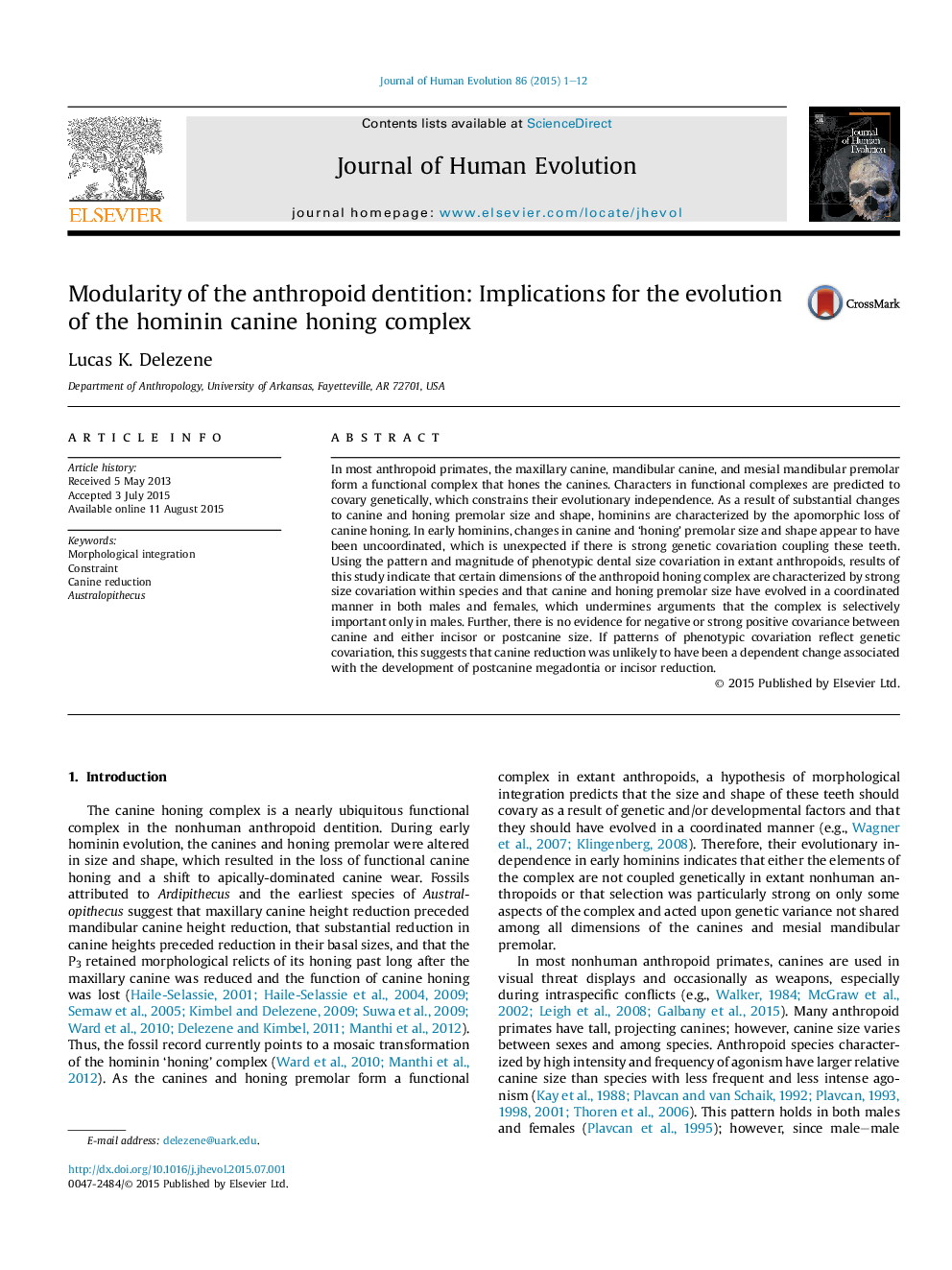| Article ID | Journal | Published Year | Pages | File Type |
|---|---|---|---|---|
| 4555989 | Journal of Human Evolution | 2015 | 12 Pages |
In most anthropoid primates, the maxillary canine, mandibular canine, and mesial mandibular premolar form a functional complex that hones the canines. Characters in functional complexes are predicted to covary genetically, which constrains their evolutionary independence. As a result of substantial changes to canine and honing premolar size and shape, hominins are characterized by the apomorphic loss of canine honing. In early hominins, changes in canine and ‘honing’ premolar size and shape appear to have been uncoordinated, which is unexpected if there is strong genetic covariation coupling these teeth. Using the pattern and magnitude of phenotypic dental size covariation in extant anthropoids, results of this study indicate that certain dimensions of the anthropoid honing complex are characterized by strong size covariation within species and that canine and honing premolar size have evolved in a coordinated manner in both males and females, which undermines arguments that the complex is selectively important only in males. Further, there is no evidence for negative or strong positive covariance between canine and either incisor or postcanine size. If patterns of phenotypic covariation reflect genetic covariation, this suggests that canine reduction was unlikely to have been a dependent change associated with the development of postcanine megadontia or incisor reduction.
